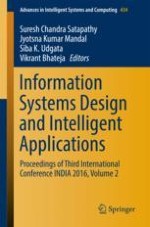2016 | OriginalPaper | Buchkapitel
Deep Convolutional Neural Network Classifier for Handwritten Devanagari Character Recognition
verfasst von : Pratibha Singh, Ajay Verma, Narendra S. Chaudhari
Erschienen in: Information Systems Design and Intelligent Applications
Verlag: Springer India
Aktivieren Sie unsere intelligente Suche, um passende Fachinhalte oder Patente zu finden.
Wählen Sie Textabschnitte aus um mit Künstlicher Intelligenz passenden Patente zu finden. powered by
Markieren Sie Textabschnitte, um KI-gestützt weitere passende Inhalte zu finden. powered by
